The first 15 selections of the 2021 NFL Draft can be split into two groups — quarterbacks and non-quarterbacks.
The quarterback class has provided reasons for optimism in flashes rather than sustained in stretches of impressive play. Mac Jones, PFF’s All-Rookie selection at quarterback, was the only first-round quarterback to finish the 2021 regular season with a top-20 PFF grade at the position.
The remainder of the first 15 selections is a different story.
Click here for more PFF tools:
Rankings & Projections | WR/CB Matchup Chart | NFL & NCAA Betting Dashboards | NFL Player Props Tool | NFL & NCAA Power Rankings
Best Bets Tool
| Player | Position | PFF grade | Position rank |
| Trevor Lawrence | QB | 59.6 | 27 / 32 |
| Zach Wilson | QB | 59.3 | 29 / 32 |
| Trey Lance | QB | 59.9 | N/A |
| Kyle Pitts | TE | 79.7 | 6 / 75 |
| Ja’Marr Chase | WR | 83.1 | 11 / 133 |
| Jaylen Waddle | WR | 78.3 | 19 / 133 |
| Penei Sewell | RT | 81.9 (at RT) | 6 / 44 |
| Jaycee Horn | CB | 67.8 | N/A |
| Patrick Surtain II | CB | 65.5 | 49 / 120 |
| DeVonta Smith | WR | 77.2 | 25 / 133 |
| Justin Fields | QB | 64.2 | 24 / 32 |
| Micah Parsons | LB | 88.5 | 1 / 88 |
| Rashawn Slater | LT | 83.8 | 6 / 39 |
| Alijah Vera-Tucker | LG | 67.2 | 18 / 42 |
| Mac Jones | QB | 79.3 | 12 / 32 |
Players such as Parsons, Chase and Slater hit the ground running with All-Pro caliber performances despite sitting out the 2020 season. The only non-quarterback in the table above who didn’t make this team is Horn, who played only three games before a broken foot ended his season.
It’s shaping up to be an impressive draft class, particularly if several of the quarterbacks show improvement in 2022 with another offseason of development and better offensive environments put in place around them.
OFFENSE
QB Mac Jones, New England Patriots
Despite being the fifth quarterback to come off the board in April, Jones has been the most reliable rookie quarterback in the NFL this season on a week-to-week basis. Part of that is because he was the fifth quarterback selected and landed in a more stable offense, but Jones deserves his credit for the Patriots’ improvement.
New England’s 11th-place finish in expected points added (EPA) per pass play over the 2021 regular season is higher than the Patriots finished in Tom Brady’s 2019 season (17th) and Cam Newton’s 2020 campaign (26th).
The biggest area of year-over-year improvement for New England has been accuracy. Patriots quarterbacks have pushed the ball one yard further downfield on average in 2021 compared to 2020, yet their uncatchable pass rate has improved from fifth-worst to fourth-best this season. That’s a testament to the catchable passes Jones throws.
RB Najee Harris, Pittsburgh Steelers
No running back was asked to do more for their offense than Harris was this season. His 978 offensive snaps were 170 more than any other player at the position, and his 381 total touches also led all running backs.
Volume should factor into the equation when discussing whether a player like Javonte Williams, who had an extremely impressive season in his own right, had a “better season” than Harris. PFF’s Wins Above Replacement (WAR) metric does incorporate volume, and it identified Harris as the second-most valuable running back in the NFL behind only Jonathan Taylor over the regular season.
Harris earning an above-average PFF grade at the running back position on a true every-down role in an offense that offered him as little support as Pittsburgh’s did is commendable.
WR Ja’Marr Chase, Cincinnati Bengals
Joe Burrow and Chase have seamlessly made the transition from torching SEC defenses to doing the same in the NFL.
The addition of Chase has unlocked a downfield element of Cincinnati’s passing offense that wasn’t there in 2020. Burrow completed nine total passes and one touchdown pass on throws 20-plus yards downfield as a rookie. He has 15 completions and eight touchdown passes on throws 20-plus yards downfield to Chase alone in 2021.
Chase’s combination of speed, physicality and after-the-catch ability make it difficult for any defense to match up with him one-on-one, as his receiving numbers against single coverage this year reflect.
| Player | Receiving yards against single coverage |
| Ja’Marr Chase | 868 |
| Justin Jefferson | 753 |
| Davante Adams | 727 |
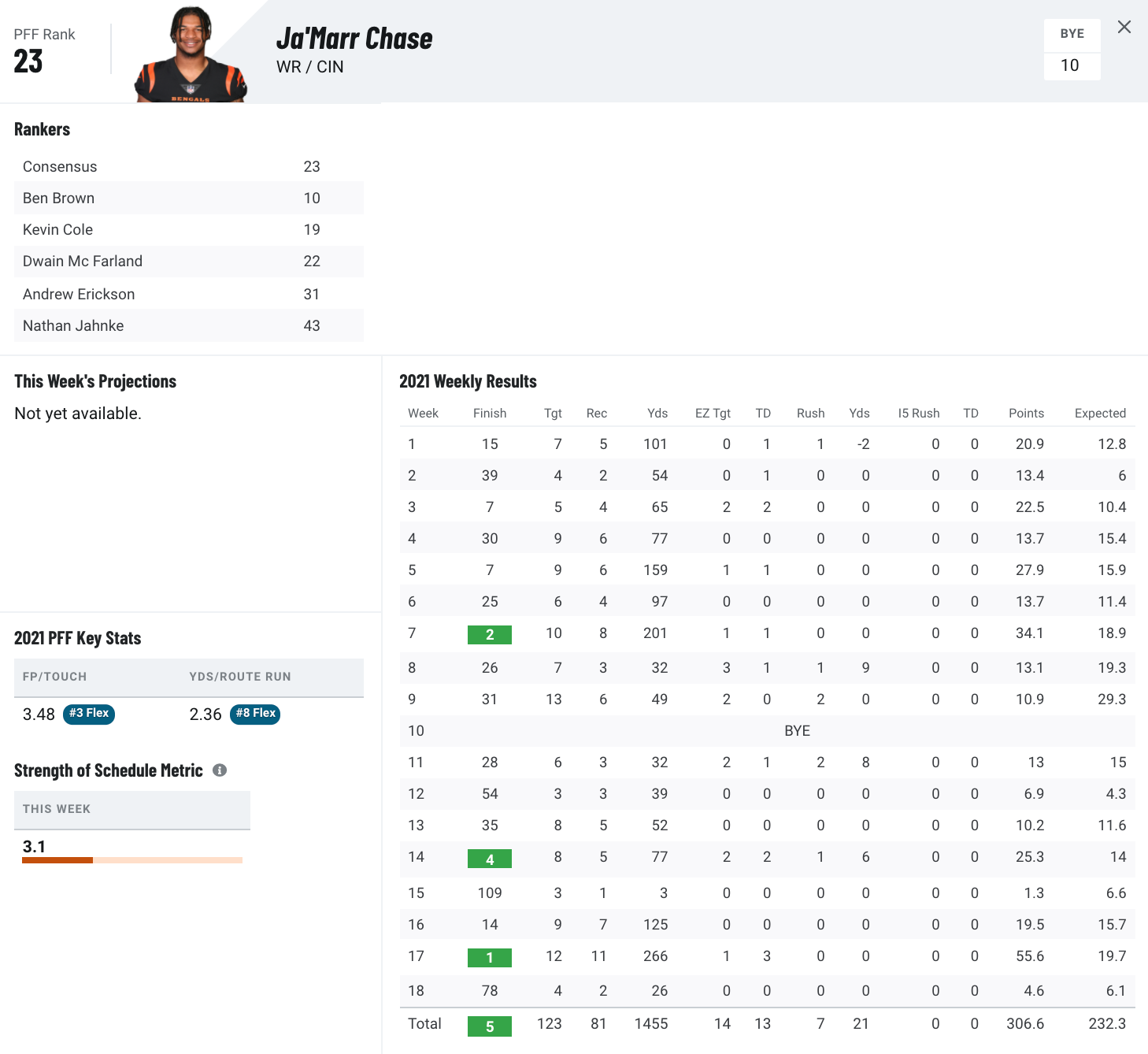
WR Jaylen Waddle, Miami Dolphins
Waddle hasn’t gotten the same kind of fanfare as Chase, but he’s had an extremely impressive rookie season operating in a Dolphins offense limited by one of the NFL’s worst offensive lines.
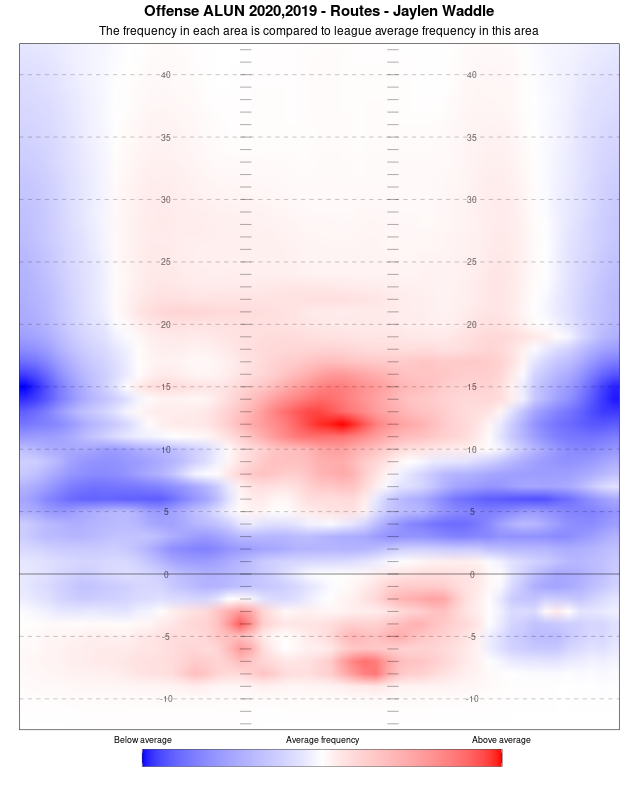
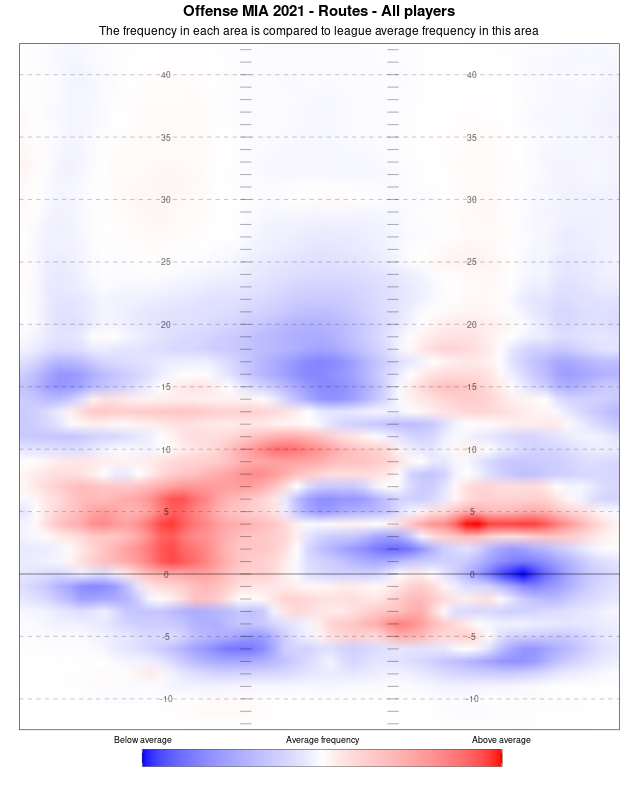
Waddle hasn’t run nearly as many of those intermediate-to-deep routes over the middle of the field that he had so much success with at Alabama (top chart) in Miami (bottom chart). Despite that, he still ranked 14th among all NFL wide receivers in PFF’s wins above replacement (WAR) metric over the course of the regular season.
Waddle has the speed and short-area quickness to separate anywhere on the field, and he is a much better contested-catch receiver than his size would suggest. His 71% contested catch rate this season trailed only Mike Evans among wide receivers with at least 15 contested targets.
WR DeVonta Smith, Philadelphia Eagles
As it turns out, the wide receiver who torched college football for two consecutive seasons and won a Heisman Trophy has proven to be a productive NFL receiver despite persistent pre-draft concerns about his weight.
One of the most impressive aspects of Smith’s rookie season was how comfortable he looked bringing in passes near the sideline. Smith ranked second among all receivers in PFF receiving grade on targets within two yards of the sideline and was among the top five players in the NFL in receptions on those targets. That was key for Smith, given his transition from an Alabama offense where many of his routes came over the middle of the field to an Eagles offense where he stuck outside the numbers most of the time.
Detroit Lions’ rookie Amon-Ra St. Brown deserves an honorable mention for his play down the stretch. St. Brown's 2.4 receiving yards per route run from Week 10 through the end of the season ranked eighth among receivers who ran at least 100 routes over that stretch.
TE Kyle Pitts, Atlanta Falcons
Pitts’ detractors will point to the fact that he only found the end zone once in 2021, but there were plenty of positives to take away from his debut in Atlanta.
Foremost among them was that Pitts was able to win consistently when split out wide against NFL cornerbacks, just as he did weekly against SEC cornerbacks while at Florida. The first-rounder’s 522 receiving yards from wide alignments were more than double any other tight end this season, and his 90.3 receiving grade vs. press coverage when lined up outside ranked second among all receivers.
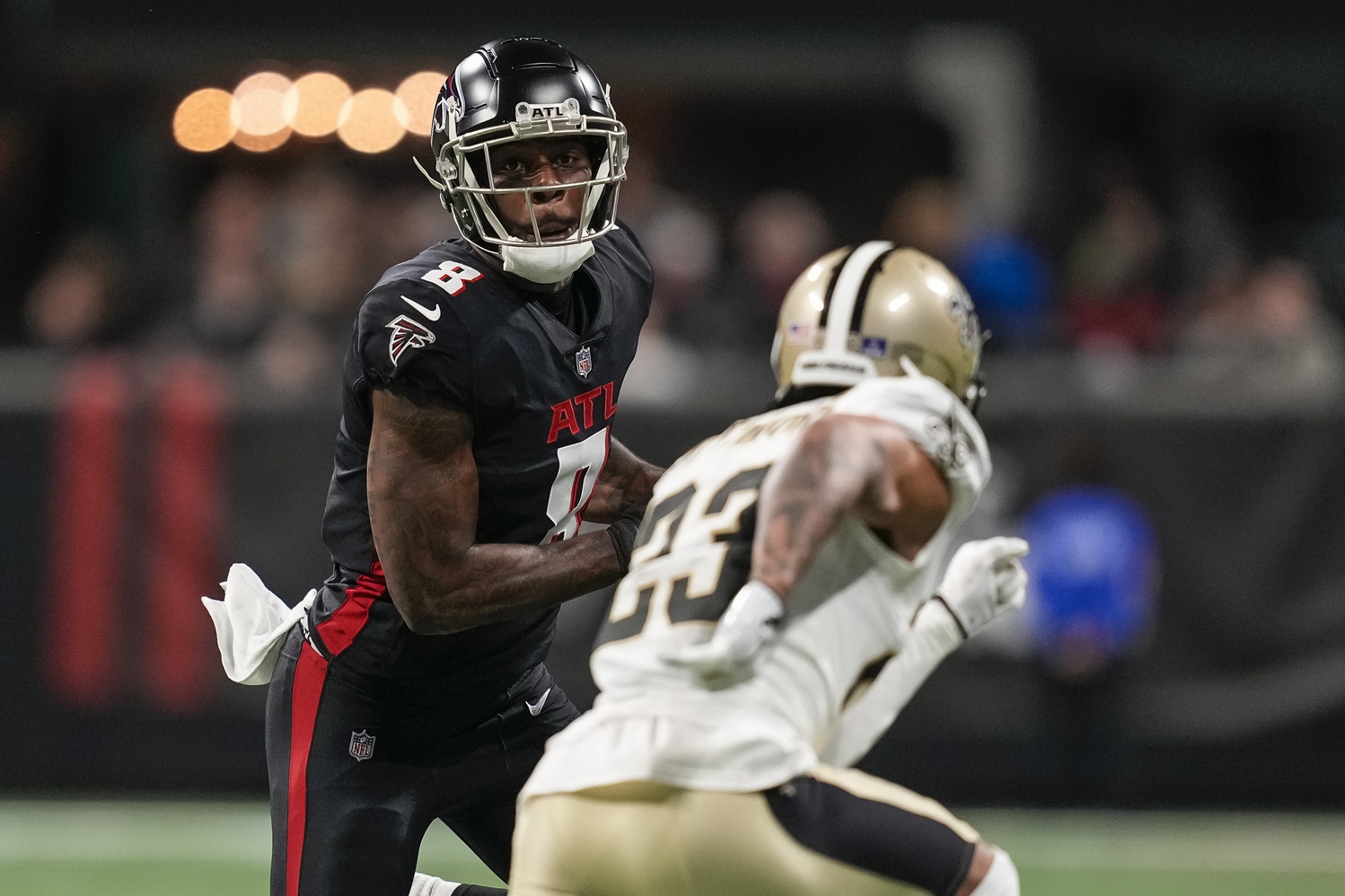
T Rashawn Slater, Los Angeles Chargers
The Chargers made it a clear point of emphasis this offseason to build up their offensive line for second-year quarterback Justin Herbert, and Slater was at the cornerstone of those efforts as the No. 13 overall pick in the 2021 NFL Draft. He has not disappointed in his first season out of Northwestern.
Most pass-blocking snaps per pressure allowed (Rookie tackles drafted since 2010 | Min. 500 pass-blocking snaps)
| Player | Draft Class | Pass-blocking snaps per pressure allowed |
| Tristan Wirfs | 2020 | 30 |
| Rashawn Slater | 2021 | 27 |
| Matt Kalil | 2012 | 24 |
| Ryan Ramczyk | 2017 | 23 |
| Tyron Smith | 2011 | 21 |
Wirfs is the only tackle drafted since 2010 to allow pressure at a lower rate than Slater on at least 500 pass-blocking snaps. Slater has been impressive in the run game, as well. His 80.8 PFF run-blocking grade ranked fifth among qualifying left tackles this season.
G Alijah Vera-Tucker, New York Jets
Over the past two seasons, the likes of Wirfs and Slater have distorted what a successful rookie season for an offensive lineman looks like. Vera-Tucker didn’t step onto the field as an immediate All-Pro level starter on New York’s offensive line, but there were flashes of impressive play, including a 90.0 PFF grade late in the season against the Tampa Bay Buccaneers.
Vera-Tucker graded out better in the run game than in pass protection. His 72.1 PFF run-blocking grade ranked 10th among 40 qualifying left guards, sandwiched between veterans like Laken Tomlinson and Joe Thuney.
Landon Dickerson was also under heavy consideration for this spot following an impressive rookie season with Philadelphia.
C Creed Humphrey, Kansas City Chiefs
Humphrey falls into the same camp as Slater. He should be receiving legitimate All-Pro consideration in addition to being one of the easiest selections on this All-Rookie team.
Humphrey leads all centers in both PFF grade (91.4) and PFF’s wins above replacement (WAR) metric at roughly 0.5 wins above a replacement-level center. That mark makes him the fifth-most valuable player overall and second-most valuable non-quarterback in the 2021 draft class.
The additions of Joe Thuney at left guard, Humphrey at center and the next player on this team at right guard have the Chiefs’ interior offensive line well positioned in the coming years.
G Trey Smith, Kansas City Chiefs
The 2021 PFF Draft Guide said of Smith coming out of Tennessee, “He’ll flash some monster blocks, and his pop on contact is about as good as it gets in the class.”
Smith put that on display on blocks like the one below en route to a 74.9 PFF run-blocking grade that ranked sixth among qualifying right guards.
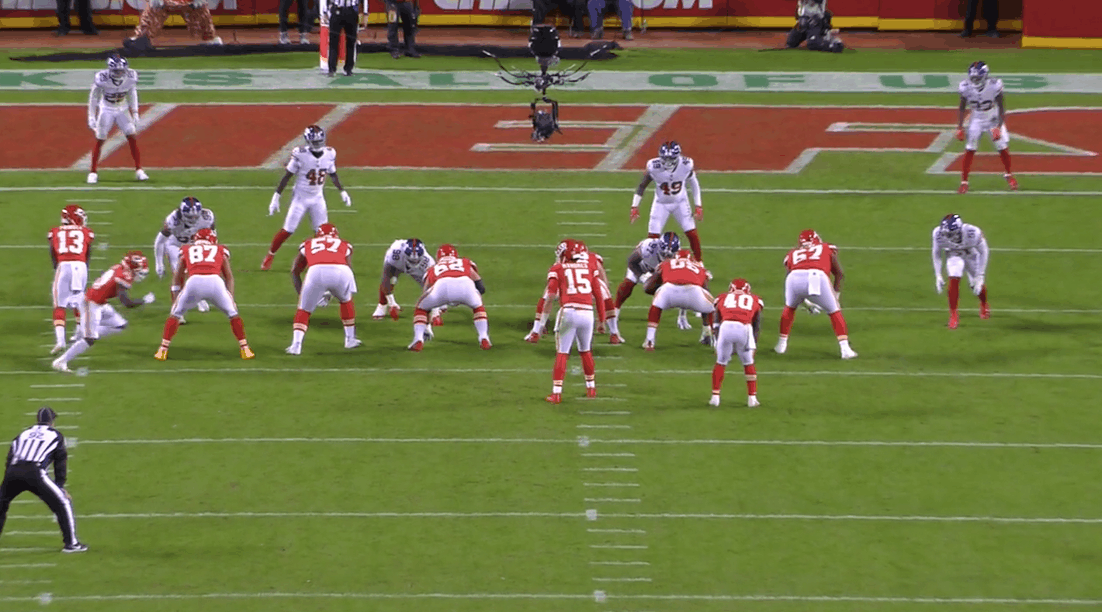
There is still room for Smith to improve in pass protection, but the rookie comfortably outplayed his sixth-round draft slot after earning the starting job for Kansas City.
T Penei Sewell, Detroit Lions
Sewell didn’t have the ideal start to his NFL career. He followed up being the fourth-lowest graded tackle to play at least 50 snaps during the 2021 preseason with a 58.8 PFF grade over the first five weeks of the regular season, 32nd among 39 qualifying left tackles.
Sewell started to settle in once he switched back over to that right side in Week 10 with Taylor Decker returning from injury. Sewell ended the 2021 regular season as PFF’s sixth-highest graded right tackle. The arrow should only be pointing up for the 21-year-old as he continues to get more comfortable on the right side.
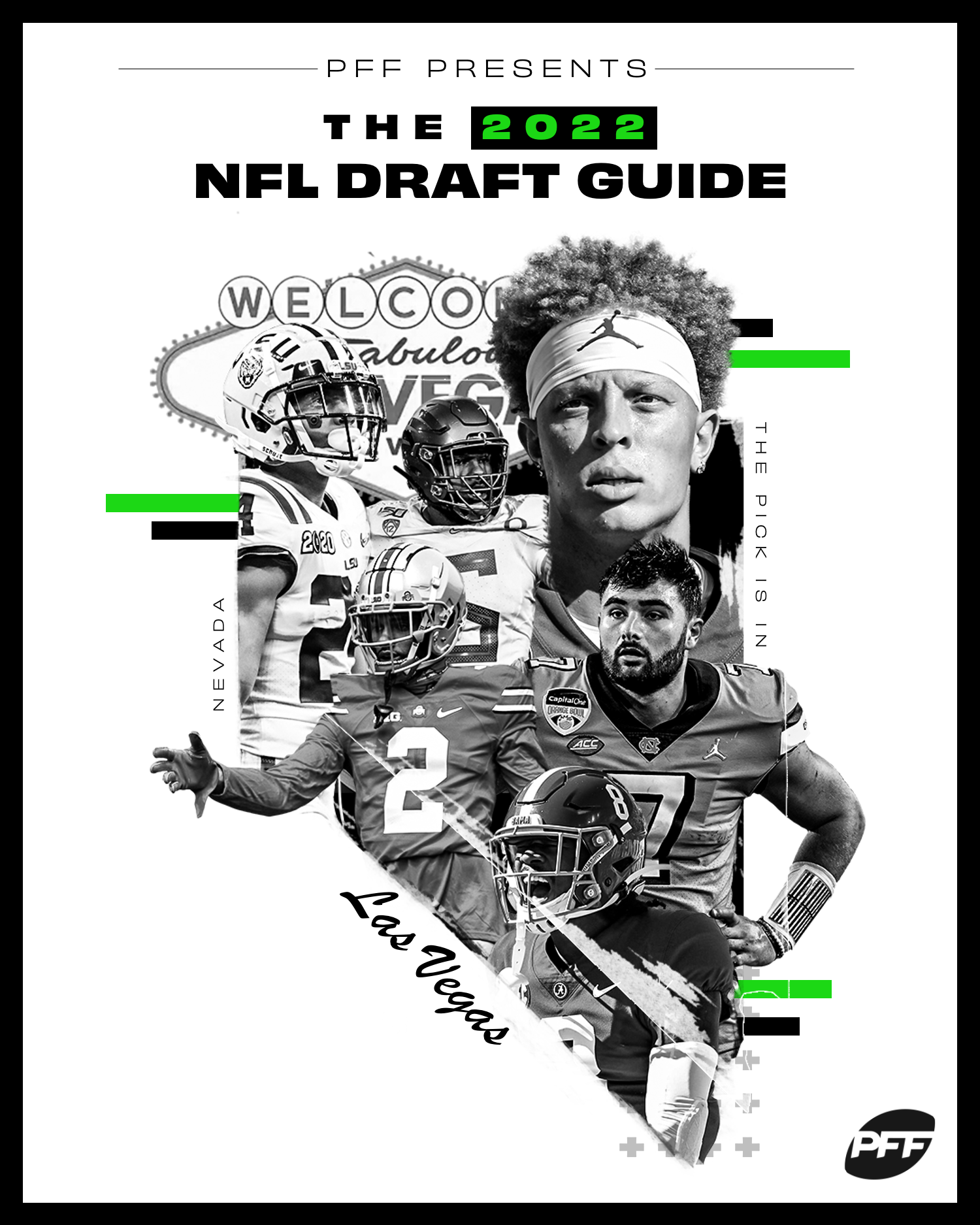
DEFENSE
DI Christian Barmore, New England Patriots
Barmore was far and away the most productive rookie interior defender — one of the consensus weakest positions in the 2021 NFL Draft — this season.
The last Patriots rookie defenders to play as many regular-season snaps as Barmore did this year (599) were Logan Ryan (600), Joe Vellano (668) and Chris Jones (784) in 2013. Bill Belichick isn’t overly eager to hand out snaps to rookies, but New England needed what Barmore offers as a pass-rusher.
His 48 quarterback pressures were second on the team behind only Matthew Judon’s 61 and a top-10 mark among all NFL interior defenders.
DI Alim McNeill, Detroit Lions
There is no obvious candidate for the second interior defender spot, but McNeill earns the nod as PFF’s second-highest graded rookie at the position with a 60.3 overall grade.
McNeill earned the second-highest PFF run-defense grade of any rookie interior defender to play at least 100 run-defense snaps, and he flashed some of the quickness that gave him intriguing pass-rush potential coming out of North Carolina State.
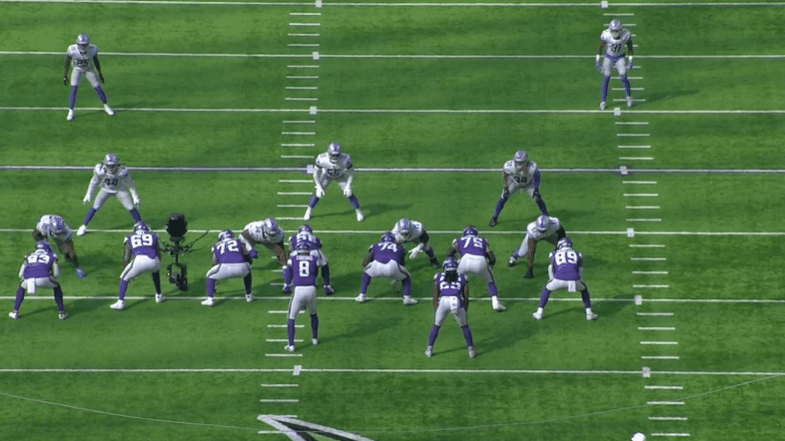
There was enough there to be excited about McNeill heading into the 2022 season.
EDGE Odafe Oweh, Baltimore Ravens
There wasn’t much clarity on the edge defender class entering the 2021 NFL Draft, and it’s still difficult to say who will end up being the best of the group after one season. However, Oweh has earned a spot on this team following a season in which he led all rookie edge defenders in quarterback pressures.
| Player | Quarterback pressures |
| Odafe Oweh | 49 |
| Azeez Ojulari | 42 |
| Jaelan Phillips | 39 |
| Kwity Paye | 39 |
While Oweh didn’t lead that group in sacks, he did in quarterback hits (10) and forced fumbles (three). His six tackles for loss or no gain against the run ranked third among rookie edge defenders.
EDGE Kwity Paye, Indianapolis Colts
There were no questions about Paye’s athleticism coming out of Michigan. He posted a 99th-percentile bench press among edge defenders, a 97th-percentile 40-yard dash and a 76th-percentile vertical jump. And those results leave out the agility drills, which Paye would have likely crushed too, had he tested them officially.
That athleticism flashed in some high-quality pass-rush wins that led to Paye leading all rookie edge defenders with a 71.3 pass-rushing grade. The sack numbers (4.0 sacks) weren’t quite there, but those should come if he continues to win his pass-rushing reps at the same rate he did in 2020.
LB Micah Parsons, Dallas Cowboys
The best word to describe Parsons is “rare.”
He’s 6-foot-3, 240 pounds and runs a sub-4.4 40-yard dash. He’s also the only player in the NFL to record 250 coverage snaps and pass-rush snaps, posting some impressive numbers in both facets. Parsons’ 19.4% pressure rate from defensive line alignments leads all defenders with at least 100 pass-rushing snaps, and he’s allowing a receiving conversion on just 23% of his targets as the primary coverage defender, fifth among linebackers with 25-plus targets.
Parsons has been the best off-ball linebacker in the NFL this season, regardless of experience. This selection couldn’t have panned out much better for Dallas.
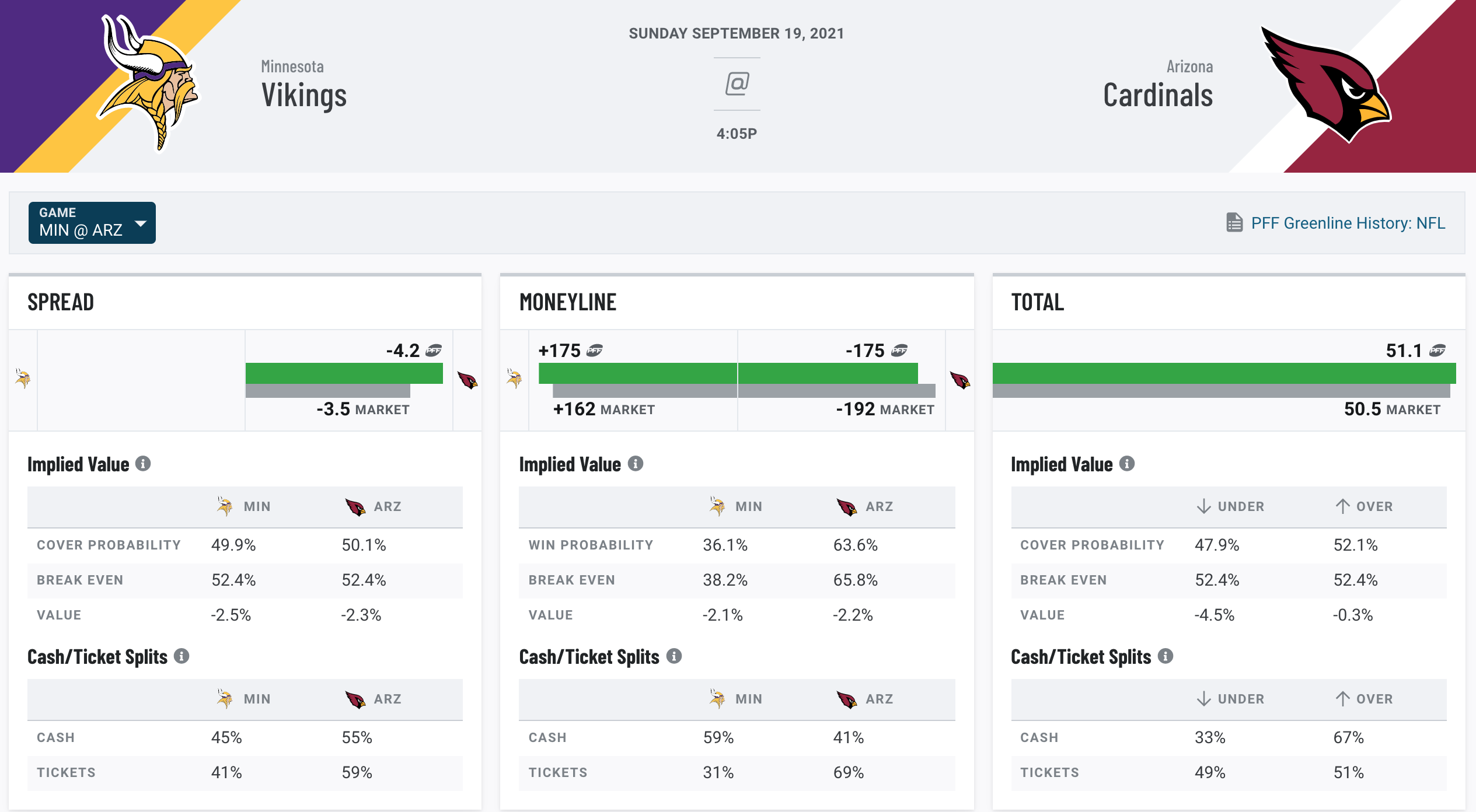
LB Jeremiah Owusu-Koramoah, Cleveland Browns
There’s always worry that unique prospects like Owusu-Koramoah, who didn’t fit into a traditional linebacker role after playing as the “rover” in Notre Dame’s defense, won’t make a clean transition to the NFL. But the speed JOK plays with, and his ability to handle a wider variety of coverage assignments than your average linebacker, has made an immediate positive impact on Cleveland’s defense.
PFF charted Owusu-Koramoah with just 168 passing yards allowed into his coverage on 300 coverage snaps this season. That rate of 0.56 yards allowed per snap ranked third among off-ball linebackers with at least 250 coverage snaps during the regular season.
CB Patrick Surtain II, Denver Broncos
Surtain stepped into the NFL and looked like a veteran for the Broncos. Teams simply weren’t able to beat him over the top.
Surtain coverage numbers on targets 20-plus yards downfield | 2021 season
| Targets | 14 |
| Receptions Allowed | 1 |
| Yards Allowed | 36 |
| Touchdowns Allowed | 1 |
| Interceptions | 2 |
A.J. Terrell and Emmanuel Moseley were the only two other cornerbacks in the NFL to allow one or fewer completions on at least 10 of those deep targets.
Surtain was able to simultaneously limit those big plays at a high rate and make big plays for Denver’s defense. His 13 combined interceptions and forced incompletions ranked tied for first among all rookie cornerbacks over the regular season.
The Broncos may ultimately regret passing on a quarterback last April, but that’s more of a reflection of the importance of the quarterback position than it is any slight on Surtain.
CB Greg Newsome II, Cleveland Browns
This was one of the tougher decisions on the team between Newsome and Green Bay’s Eric Stokes. Both have had terrific seasons and both would likely have made the 2020 All-Rookie team.
Newsome was excellent in single coverage this season for the Browns. He allowed just 14 receptions on 31 single-coverage targets as a rookie and was PFF’s highest-graded rookie cornerback on those targets. Cleveland has a promising young cornerback tandem to build around between Newsome and fellow former first-round selection Denzel Ward.
Slot CB Nate Hobbs, Las Vegas Raiders
Hobbs came in as a fifth-round pick out of Illinois and won the starting nickel role in first-year defensive coordinator Gus Bradley’s defense. He proceeded to top that accomplishment by becoming PFF’s highest-graded rookie cornerback in 2021.
Hobbs doesn’t have gaudy interception or pass breakup numbers because much of his job in the slot was coming up and limiting damage on plays in front of him. He did that well, allowing just 0.7 yards per coverage snap, seventh among cornerbacks with at least 250 snaps. Hobbs paired that play in coverage with a 78.8 PFF run-defense grade in 2021 that ranked 11th at the position.

S Jevon Holland, Miami Dolphins
Holland was yet another rookie from the 2021 class whose play this season pushed back against the notion that opting out is a detrimental decision for a prospect. Holland decided to forego his final season at Oregon in 2020 and finished the 2021 season as the NFL’s third-most valuable safety, per PFF’s wins above replacement (WAR) metric.
He proved to be one of the more well-rounded safeties in the NFL with PFF grades above 75.0 as a run defender, coverage defender and tackler. Holland even added 16 quarterback pressures — second among safeties — including six in the Dolphins’ memorable win over the Baltimore Ravens in Week 10.
S Trevon Moehrig, Las Vegas Raiders
Moehrig was the closest thing to a pure single-high safety the NFL had this season in Las Vegas. The Raiders’ 59% Cover 3 rate was 17 percentage points higher than any other defense in the league, and their 82% of snaps with a single-high safety post-snap were also most in the NFL by over 10 percentage points. Moehrig impressed in that role.
The Raiders allowed just three completions on passes thrown 20-plus yards downfield and between the numbers all season, tied for third-fewest of any defense, and a good chunk of the credit there can go to the rookie out of TCU. Moehrig was credited with nearly as many interceptions plus forced incompletions (6) as he had completions allowed as the primary coverage defender (9).
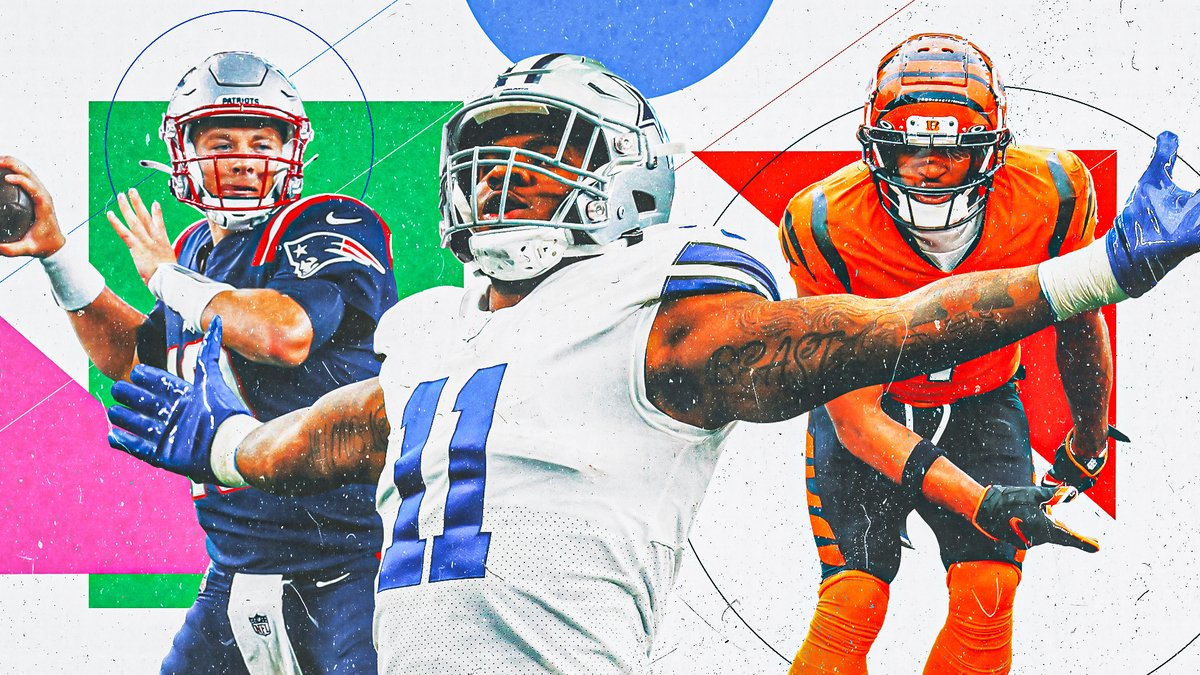


 © 2025 PFF - all rights reserved.
© 2025 PFF - all rights reserved.